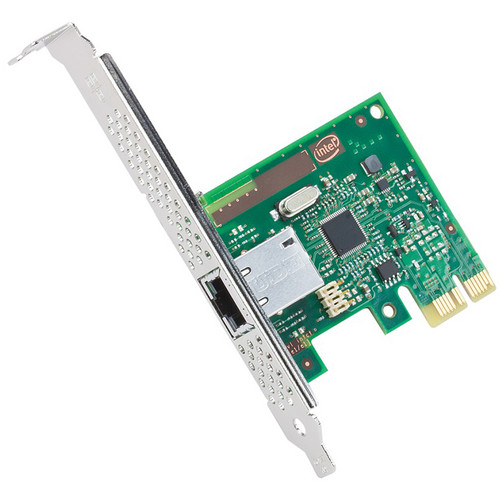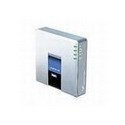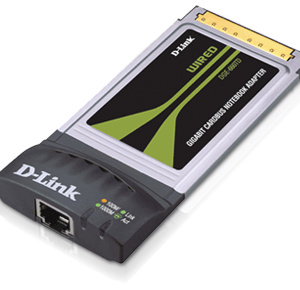The Single-Port Gigabit Ethernet Server Adapter I210 (Single Pack) from Intel is a low-halogen PCIe 10/100/1000 Ethernet adapter, designed for entry-level servers and audio-video applications. It offers innovative power management features, including Energy Efficient Ethernet (EEE), DMA Coalescing, ultra-compact design, and a ventilated bracket for increased efficiency and reduced power consumption. It supports PCIe Gen 2.1 (2.5 GT/s) and IEEE 802.1Qav Audio-Video Bridging (AVB) for tightly controlled media stream synchronization, buffering, and reservation.
The I210 Ethernet Controller supports IEEE 802.1Qav Audio-Video Bridging (AVB) for customers requiring tightly controlled media stream synchronization, buffering, and reservation. 802.1Qav is part of the AVB specification, which provides a way to bounded latency and latency variation for time sensitive traffic. AVB includes timing and synchronization for time specific applications, (802.1AS) Stream Reservation (SR) protocol, to guarantee the resources needed for Audio/Video (AV) streams (802.1Qat). It also includes forwarding and queuing enhancements for time sensitive streams (802.1Qav). The adapter is low halogen and completely lead-free to reduce the environmental impact. It maximizes airflow and cooling with a ventilated bracket.
This server adapter contains four transmit and four receive queues. These queues offer ECC memory for improved data reliability. The adapter efficiently manages packets with minimum latency by combining parallel and pipelined logic architectures, optimized for these independent transmit and receive queues. These queues, combined with Receive Side Scaling (RSS) and Message Signal Interrupt Extension (MSI-X) support, optimize the performance on servers with multi-core processors. Energy Efficient Ethernet (EEE) reduces the power consumption of an Ethernet connection during periods of low network activity by negotiating with a compliant EEE switch port to transition to a Low Power Idle (LPI) state. EEE is supported for both 1000BASE-T and 100BASE-TX.
DMA request is initiated to place the packet into host (or server) memory, when a packet arrives at the adapter. This transaction wakes up the processor, memory, and other system components from a lower power state in order to perform the tasks required to handle the incoming packet. Based on the configurable DMAC settings, incoming packets are buffered momentarily before any DMA calls are made. This enables the controller to intelligently identify opportunities to batch multiple packets together, so that when components are wakened from lower power states, they can efficiently handle the batched packets at the same time. It also enables the platform components to remain in lower power states longer, which can reduce platform energy consumption. DMAC synchronizes DMA calls across all controller ports to ensure maximum power savings.
 04 3550600
04 3550600 052 7036860
052 7036860 info@techsouq.com
info@techsouq.com





There are no reviews yet.